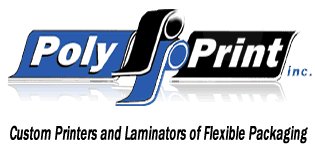Opacity
Definition
Relevance to performance
What affects the opacity of OPPalyte films
Test principles
Related Terminology
Definition
Opacity represents a substrate's light blocking ability. It is primarily used as a property of paper and predicts the relative visibility on one side of the paper of the images that exist on the other side. Because white opaque films are replacing paper in some applications, ExxonMobil measures opacity for some white films.
There are two common types of opacity measurements, and ExxonMobil uses the one called "89% reflectance backing," also called "contrast ratio." This value is equal to 100 times the ratio of the diffuse reflectance of a film sample backed by a black body (<.5% reflectance) to the diffuse reflectance of the same sample backed by a white body (89% reflectance). The units are percent, and a perfectly opaque material will have an opacity value of 100%.
Relevance to performance
Originally developed for paper, this property predicts the appearance of two-side printed paper. Higher opacity values allow better readability on one side, because the print showing through from the other side is less noticeable.
Now, the same test used for paper is being applied to opaque polymer films that compete in paper markets, most notably labels. Depending on the product design and film thickness, opacity values for OPPalyte films range from 60% to 95%.
What affects the opacity of OPPalyte films
Opacity, like light transmission, is determined mostly by pigment and cavitation characteristics, which are controlled by proprietary resin formulations and film-making process conditions. ExxonMobil technology creates high opacity levels with a minimum use of inorganic fillers, such as calcium carbonate (CaCO3) and titanium dioxide (TiO2).
Test principles
TAPPI procedure T 425 and ASTM procedure D 589 describe the same standard protocol for determining the opacity of paper. ExxonMobil procedure #498 follows this protocol with only minor exceptions; the most notable being that ExxonMobil does not precondition samples for 40 hours at standard laboratory conditions prior to testing.
Although opacity has to do with light-blocking ability, the test actually measures two reflectance values. The ratio of these values times 100 is equal to percent opacity. The equation, with descriptions of the variables follows.
- Opacity (89% reflectance backing) = CO.89 = 100 (R0 + RO.89)
- CO.89 is the contrast ratio, which is another name for this type of opacity measurement.
- R0 is the reflectance of the substrate when it is backed by a black body of 0.5% reflectance or less. Any light that passes through a partially opaque sheet will reflect back negligibly.
- RO.89 is the reflectance of the substrate when it is backed by a white body having a reflectance of 89%. This value will be higher than R0 (or equal to it, if the sample is perfectly opaque) because any light that passes through the substrate will largely be reflected, and a portion of that will transmit through the film a second time (in the opposite direction).
Opacity measurements are made with commercially available opacity meters that meet criteria stated in the standard procedures. The TAPPI Technical Services Department provides names of test equipment suppliers. ExxonMobil uses a Technidyne BNL-3 Opacimeter.
Related terminology
Light transmission: Light transmission is the percentage of incident light that passes through a film. It is related to opacity, but cannot be calculated directly from it. In general, the lower the light transmission, the higher the opacity.
Optical density: Optical density is a measure of a material's light blocking ability and is theoretically equal to log10 (100 ÷ % light transmission). ExxonMobil uses optical density values with metallized films.
Oxygen scavengers: TAPPI stands for the Technical Association of the Pulp and Paper Industry. Among other things, it provides standard procedures for testing paper.

